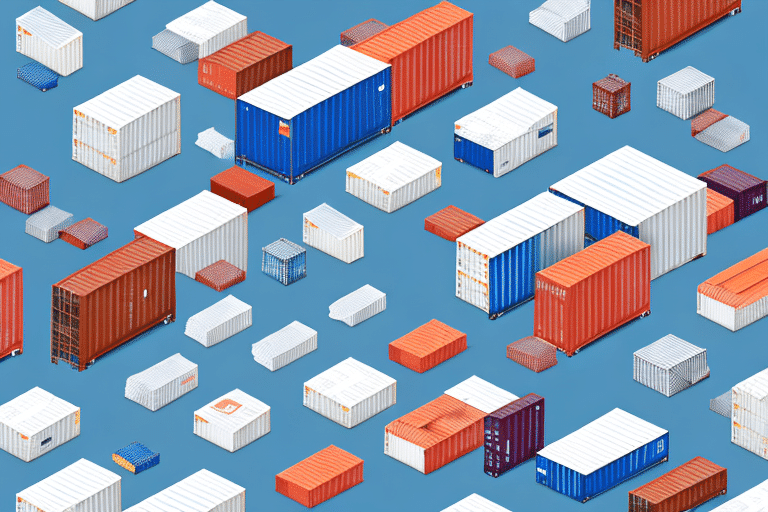Becoming an Ecommerce Shipping Clerk: Essential Insights and Best Practices
If you're considering a career as an ecommerce shipping clerk, there are several key aspects to understand before diving in. Shipping plays a crucial role in the success of any ecommerce business, and as a shipping clerk, you'll ensure that products reach customers efficiently and reliably. This guide covers the fundamentals of ecommerce shipping, the necessary skills and tools, best practices, and the future of the industry.
The Fundamentals of Ecommerce Shipping
Understanding the Shipping Process
Ecommerce shipping involves transporting products from the seller to the customer. As a shipping clerk, your responsibilities include managing orders, selecting appropriate shipping methods, and ensuring timely delivery. According to Statista, shipping costs account for approximately 15% of total ecommerce expenses, highlighting the importance of efficient shipping management.
Types of Shipping Options
- Ground Shipping: Cost-effective for non-urgent deliveries.
- Air Freight: Faster but more expensive, suitable for urgent shipments.
- Express Delivery: Offers the quickest delivery times with higher costs.
Packaging Best Practices
Proper packaging is essential to protect products during transit. As a shipping clerk, you should choose appropriate materials like boxes, bubble wrap, or packing peanuts based on the product's size and fragility. According to a report by Inc., effective packaging can reduce return rates by up to 5% by preventing damage during shipping.
The Role of an Ecommerce Shipping Clerk
Managing the Shipping Workflow
Your primary role involves overseeing the entire shipping process—from order fulfillment to tracking deliveries and handling returns. Collaboration with customer service, merchants, and vendors is crucial to resolve any shipping issues promptly.
Inventory Management
Maintaining accurate inventory records is a key responsibility. This includes tracking stock levels, monitoring product availability, and updating inventory systems to prevent overselling and stockouts.
Compliance with Shipping Regulations
Staying informed about shipping regulations, including international shipping laws and customs requirements, is vital to ensure all shipments are compliant and avoid legal complications.
Essential Skills and Tools for Success
Key Skills
- Organizational Skills: Ability to manage multiple tasks efficiently.
- Attention to Detail: Ensuring accuracy in orders and inventory records.
- Problem-Solving: Addressing and resolving shipping issues swiftly.
- Communication: Effective interaction with customers, vendors, and team members.
Essential Tools and Software
Utilizing the right tools can significantly enhance your efficiency. Essential tools include:
- Shipping Software: Platforms like ShipStation or Easyship for managing and tracking orders.
- Label Printers and Scanners: For accurate labeling and inventory tracking.
- Barcode Scanners: Streamline the scanning process to reduce errors.
- Inventory Management Systems: Software like TradeGecko to manage stock levels effectively.
Best Practices in Ecommerce Shipping
Efficient Order Management
Implementing automated systems can help manage high volumes of orders, reduce manual errors, and ensure timely processing. Tools like Zoho Inventory offer automation features that enhance order management efficiency.
Cost Optimization Strategies
Shipping costs can significantly impact profitability. Strategies to reduce costs include:
- Negotiating rates with carriers.
- Optimizing package sizes to avoid dimensional fees.
- Utilizing multi-carrier shipping solutions to find the best rates.
- Offering free shipping thresholds to increase average order value.
Effective Communication
Keeping customers informed about their order status through regular updates can enhance customer satisfaction and reduce inquiries. Tools like Mailchimp can automate email notifications for order confirmations, shipping updates, and delivery confirmations.
Managing Inventory and Shipping Costs
Inventory Optimization
Effective inventory management ensures that products are available when needed without overstocking. Implementing a FIFO (First-In, First-Out) system can help manage perishable goods and reduce waste.
Shipping Cost Reduction
Understanding and managing shipping costs is crucial. Here are some methods to reduce expenses:
- Consolidating shipments to lower per-unit costs.
- Using lightweight packaging materials to reduce weight-based fees.
- Implementing drop shipping for certain products to eliminate handling costs.
Handling Returns and Exchanges
Streamlined Return Processes
Establishing a clear and efficient return process is essential for maintaining customer trust. This includes clear return policies, easy-to-use return labels, and prompt processing of refunds or exchanges.
Managing Damaged Goods
Handling damaged returns requires swift action. Inspect returned items, determine the cause of damage, and decide whether to restock, refurbish, or discard the product.
Scaling Ecommerce Shipping Operations
Automation and Technology Investment
As your business grows, investing in automation tools can help manage increased order volumes without a proportional increase in labor costs. Technologies like automated sorting systems and AI-driven shipping solutions can enhance scalability.
Staff Training and Expansion
Training additional staff members ensures that your team can handle the increased workload. Providing comprehensive training on new tools and best practices is essential for maintaining efficiency.
The Future of Ecommerce Shipping: Trends and Predictions
Emerging Technologies
Advancements in technology, such as drone deliveries and autonomous vehicles, are set to revolutionize the shipping industry. Staying informed about these trends can help you adapt and leverage new opportunities.
Sustainability Initiatives
There is a growing emphasis on sustainable shipping practices. Implementing eco-friendly packaging and optimizing delivery routes to reduce carbon emissions can not only save costs but also appeal to environmentally conscious consumers.
Finding Job Opportunities and Career Growth
Job Search Strategies
Opportunities for ecommerce shipping clerks can be found on popular job search platforms like Indeed, LinkedIn Jobs, and directly through company career pages.
Career Advancement
Gaining experience and additional skills can open doors to higher positions in logistics and supply chain management. Pursuing certifications in inventory management or logistics can further enhance your career prospects.
In conclusion, becoming an ecommerce shipping clerk offers a dynamic and essential role within the ecommerce ecosystem. By mastering the fundamentals, leveraging the right tools, and staying abreast of industry trends, you can effectively contribute to your company's success and achieve personal career growth.








